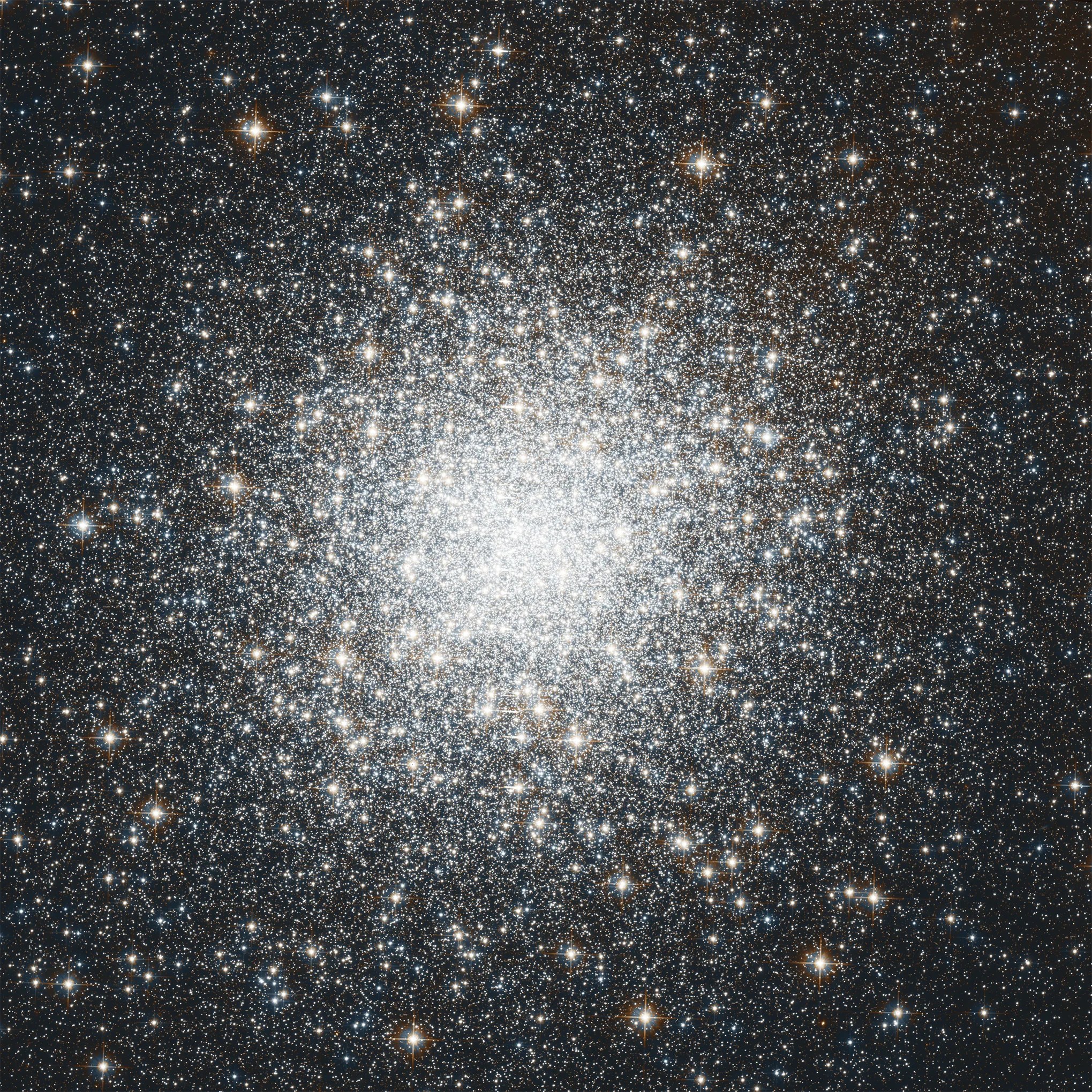Messier 45
This bright open cluster of stars, more commonly called the Pleiades or Seven Sisters, is easy to see with the unaided eye.
Distance
445 light-years
Apparent Magnitude
1.6
constellation
Taurus
object type
Open Cluster

Commonly called the Pleiades or Seven Sisters, M45 is known as an open star cluster. It contains over a thousand stars that are loosely bound by gravity, but it is visually dominated by a handful of its brightest members.
One of these stars, Merope, is located just outside the frame of this image to the upper right. The colorful rays of light at the upper right, emanating from the star, are an optical phenomenon produced within the telescope. The nearly straight, blue-white wisps pointing toward the upper right are streams of large dust particles. As the cloud moves toward Merope, its smaller dust particles are slowed down by the star’s radiation pressure more than the larger particles are. The large dust particles continue on toward the star while the smaller particles are left behind at the lower left of the picture.
The Pleiades cluster has been observed since ancient times, so it has no known discoverer. However, Galileo Galilei, the Italian scientist best known for discovering the largest moons of Jupiter and championing a heliocentric model of the solar system, was the first to observe the Pleiades through a telescope. M45 is located an estimated distance of 445 light-years from Earth in the constellation Taurus, though this number is not universally agreed upon. It has an apparent magnitude of 1.6 and can be seen with the naked eye. The cluster is best observed during December.
Anim.: STScI AVL; Images: Terence Dickinson (Pleiades w/ Jupiter, Saturn, Hyades); STScI Digitized Sky Survey; Chuck Vaughn (amateur astrophotographer, 85-min. exposure w/ 12.5" f/9 Ritchey-Chretien telescope); Hubble Heritage Team (NASA, STScI/AURA)
For more information about Hubble’s observations of M45, see:


Explore Hubble's Messier Catalog
The following pages contain some of Hubble’s best images of Messier objects.

Messier 1 (The Crab Nebula)
Better known as the Crab Nebula, Charles Messier originally mistook Messier 1 for Halley’s Comet, which inspired him to create…

Messier 2
Hubble's image of Messier 2 is comprised of visible and infrared wavelengths of light.

Messier 3
Messier 3 holds more than 500,000 stars.




